Table of Contents
Other common names: Funeral Nudibranch, Dotted Nudibranch, Mourning Nudibranch

Jorunna funebris. Photo by Ria Tan
Remember the “sea bunny” Jorunna parva that took over the internet previously?
If you have missed out on the hype, here’s a video on how Jorunna parva became an internet star overnight with its adorable demeanour.
Video Credit: Jukin' Media (via YouTube)
However, you do not need to travel all the way to Japan to meet one of these cute little“sea bunnies”.
Meet our very own endearing local Polka-dot Nudibranch, Jorunna funebris!
Video Credit: Peter Seow (via YouTube)
If you do not intend to finish the whole article, you should click HERE to see why you are NOT supposed to touch them when you see them, even though they may be very tempting to pet.
1. What is a Nudibranch?
Latin ‘nudus’ = naked, Greek βραγχια, ‘brankhia’ = gills.
Nudibranch is a group of soft-bodied snails that have lost their shells when they transit from larvae to adults. All nudibranch are carnivorous [1].
Here are some of the typical structures that you will be able to find on a nudibranch
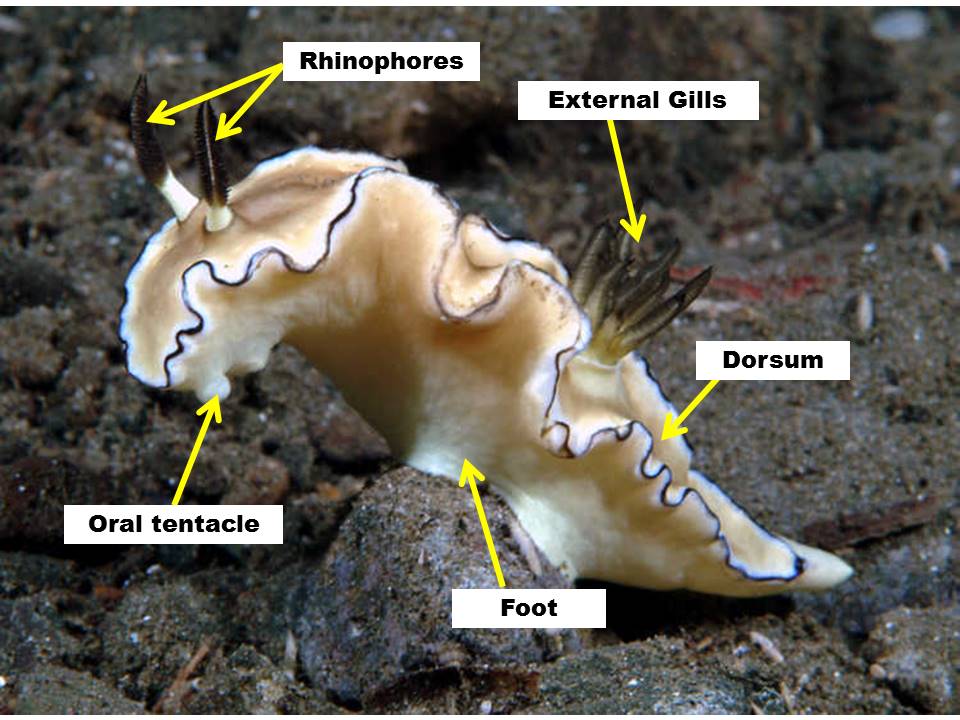
Typical structures found on nudibranch. Modified and adapted from Ken Bondy.
Some useful terms to know [1]:
Oral tentacles: A pair of tentacle, which is located on either side of the mouth of nudibranchs, used for food location and recognition by taste or touch.
Rhinophores: A pair of sensory tentacles, which is located on the head or anterior section of nudibranchs, used primarily for chemosensory (smell, taste).
Dorsum: The exposed back or top surface of a nudibranch mantle.
Foot: The large muscle mass on which gastropods move.
Nudibranch often exhibit brilliant colours and come in many beautiful forms, a photo example featuring Chromodoris annae is shown below.
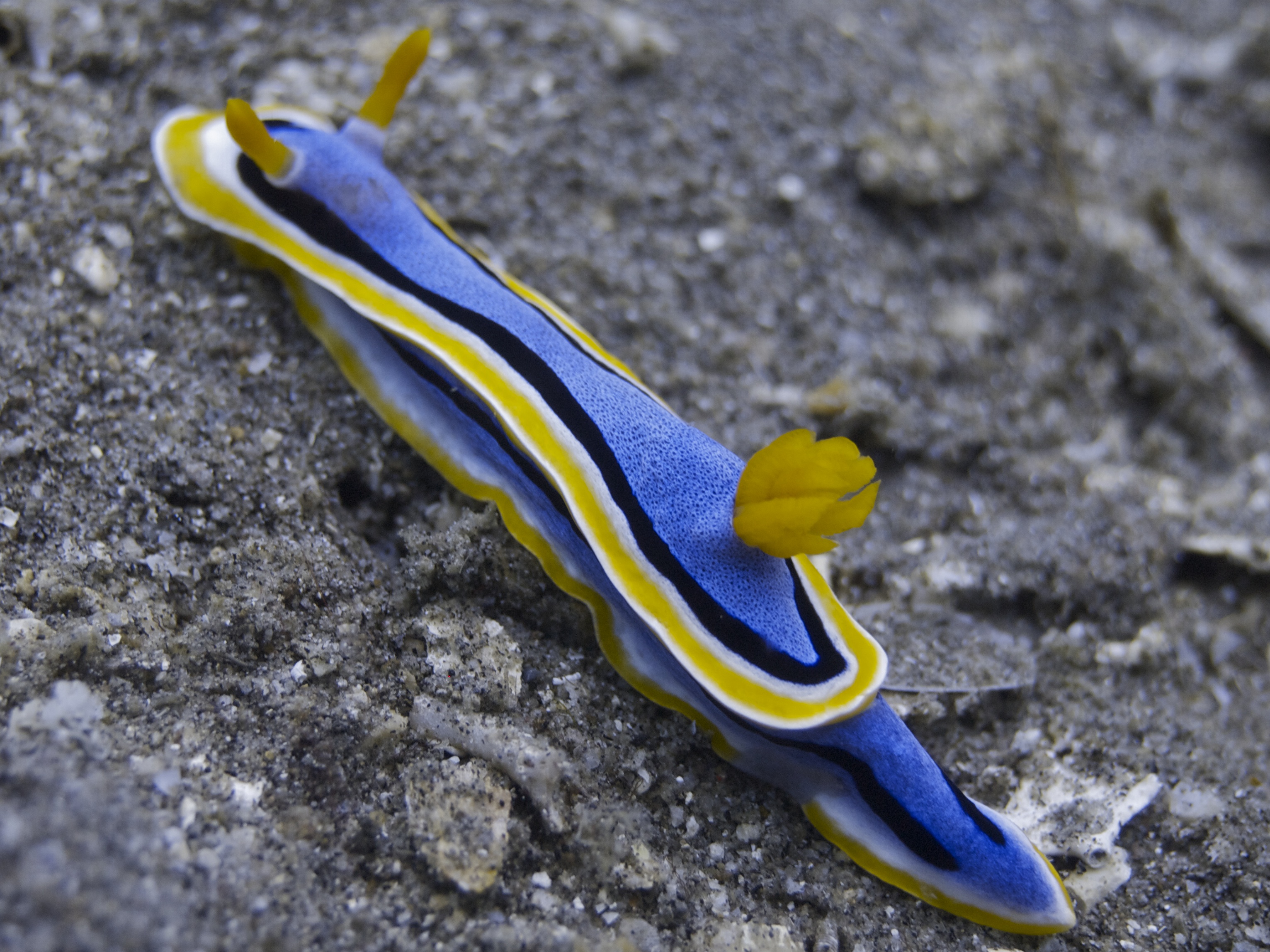
Chromodoris annae by Elias Levy (Creative Commons)
The bright colours usually serve as warning signs for certain species’ toxicity, while others simply blend into the surroundings to camouflage. Flower-like feathery external gill could be present on some of the nudibranchs’ backs whereas others have them hidden between the body mantle and the foot. Most nudibranchs have two pairs of tentacles - oral tentacles and rhinophores.
2. Common Mistaken Identities
All nudibranch is a sea slug but not all sea slug is a nudibranch.
Here are some examples of sea slugs from the Phylum Mollusca but different Orders.
| 1. Sea Hares (Order Anapsidea) |
2. Sap-sucking slugs (Order Sacoglossa) |
3. Nudibranch (Order Nudibranchia) |
|
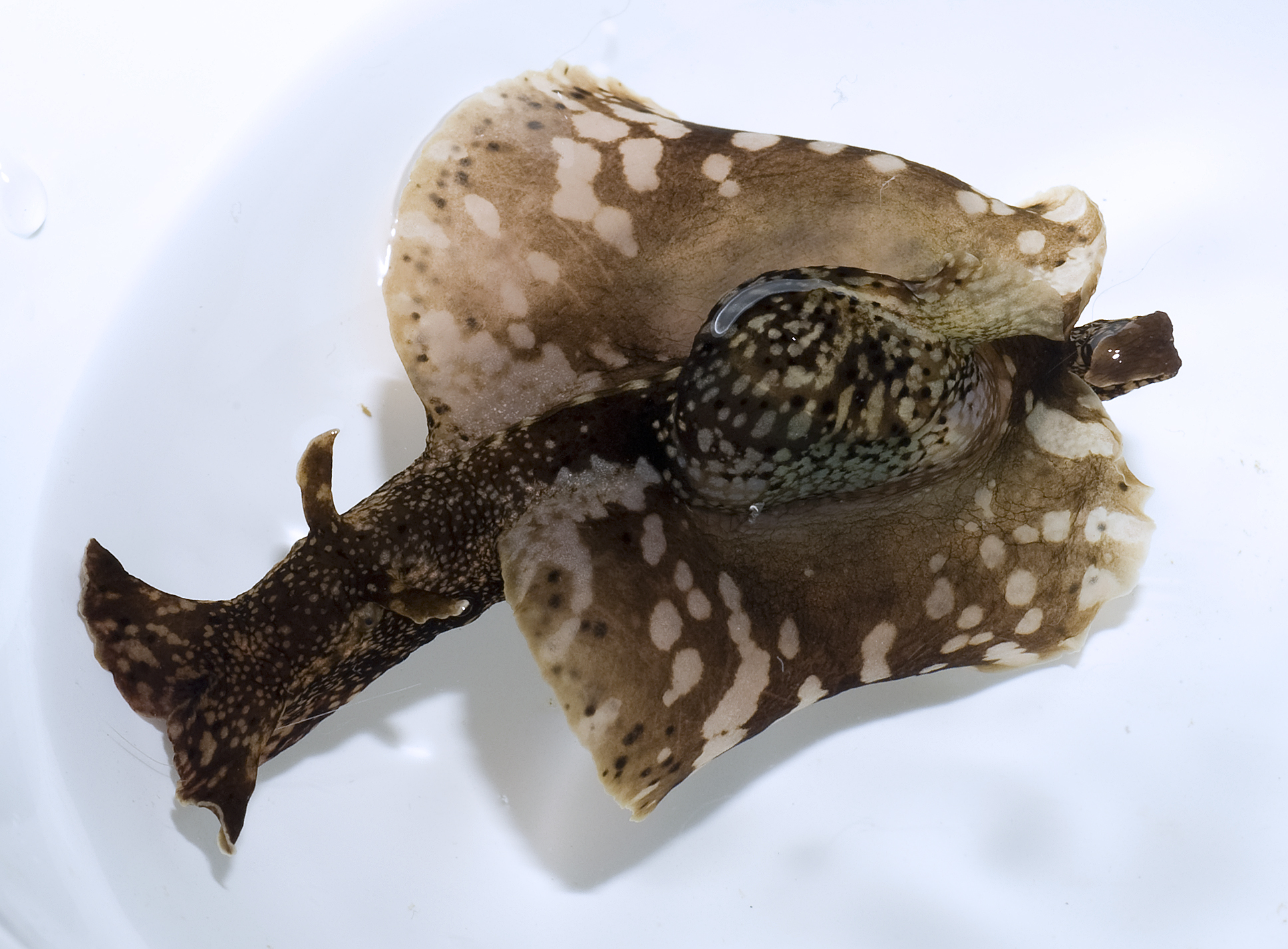 |
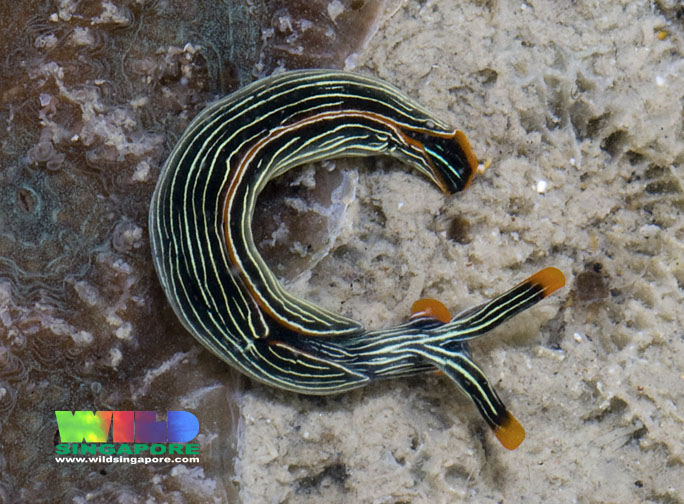 |
 |
|
| Species |
Aplysia extraordinaria |
Thuridilla sp. |
Chromodoris lochi |
| Rhinophores |
One pair of rhinophores present. |
||
| Oral Tentacles |
One pair of oral tentacles |
Oral tentacles absent |
One pair of oral tentacles |
| Gills |
Internal gills |
Internal gills |
External gills |
3. Diagnostics (How do you identify Jorunna funebris?)
External Morphology
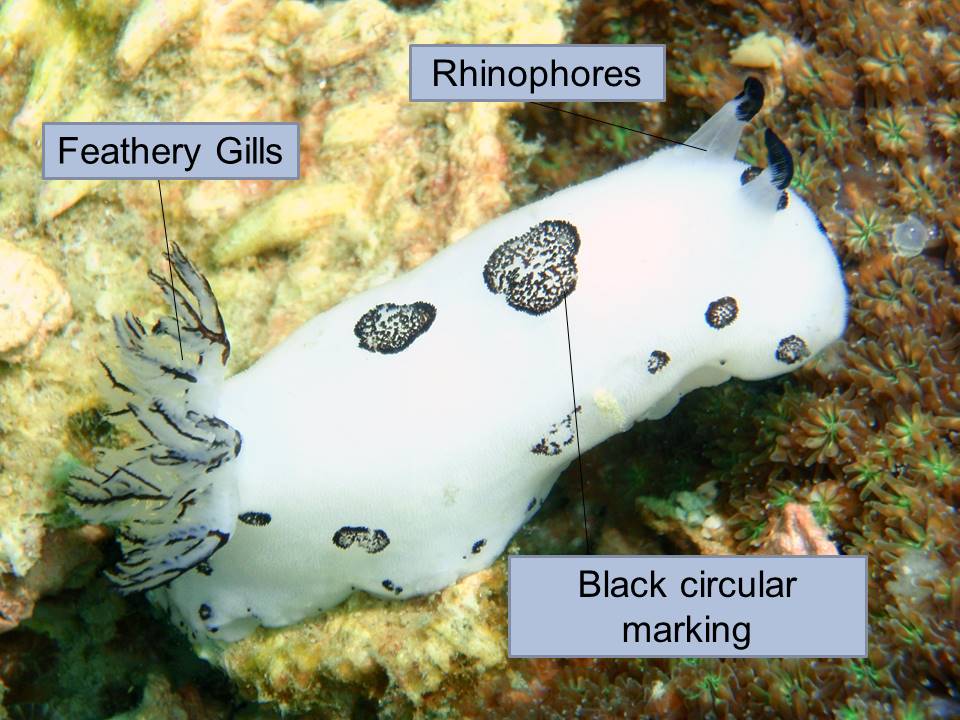
Jorunna funebris (Adapted and modified from Creative Commons)
Jorunna funebris has a very characteristic white body (also known as dorsum) with black circular markings. Although they may look a bit like Jorunna parva, it is very easy to tell them apart when you look at the black spots. Jorunna parva has small fully pigmented black spots all over its body. Meanwhile, Jorunna funebris has larger non-fully pigmented black spot-like patterns, made up of tiny black spots within the ring, something that makes it very unique from other nudibranch species. However, it is also worthy to note that Jorunna funebris may exhibit slight variations in colour, from white to cream yellow body and dark brown to black ringed-patterns.
Other features to look out for include black-tipped rhinophores and black edging on the white feathery gills on the back [3]. Adult Jorunna funebris can vary from 15 mm to over 70 mm long, with an average length 35 mm [5].
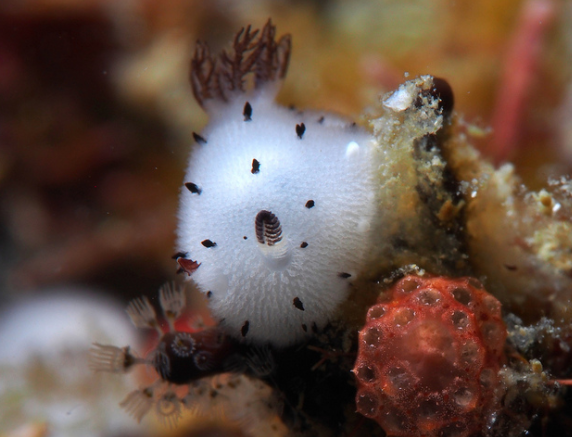 Photo taken by Rickard Zerpe (Creative Commons) |
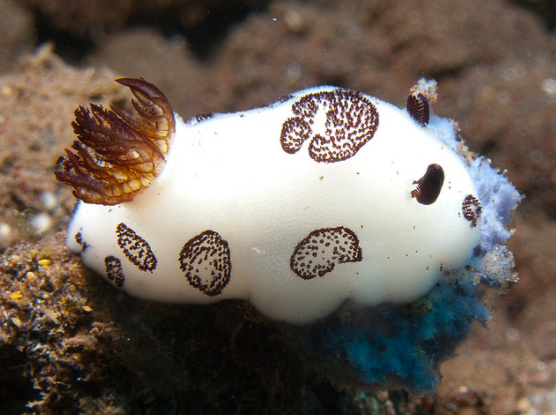 Photo taken by Benjamin Naden (Creative Commons) |
| Jorunna parva. |
Jorunna funebris. |
4. Biology
4.1. Life History
Jorunna funebris is a hermaphrodite, which means it has both male and female reproductive organs. The genital openings lie on the right side of the body, so the animals position themselves side-by-side in opposite directions before mating. It lays white ribbon-like eggs [1].
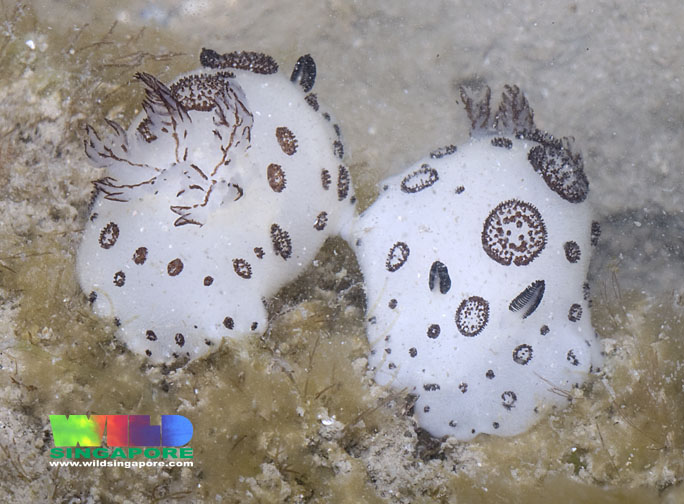
Mating Jorunna funebris pair. Photo taken by Ria Tan
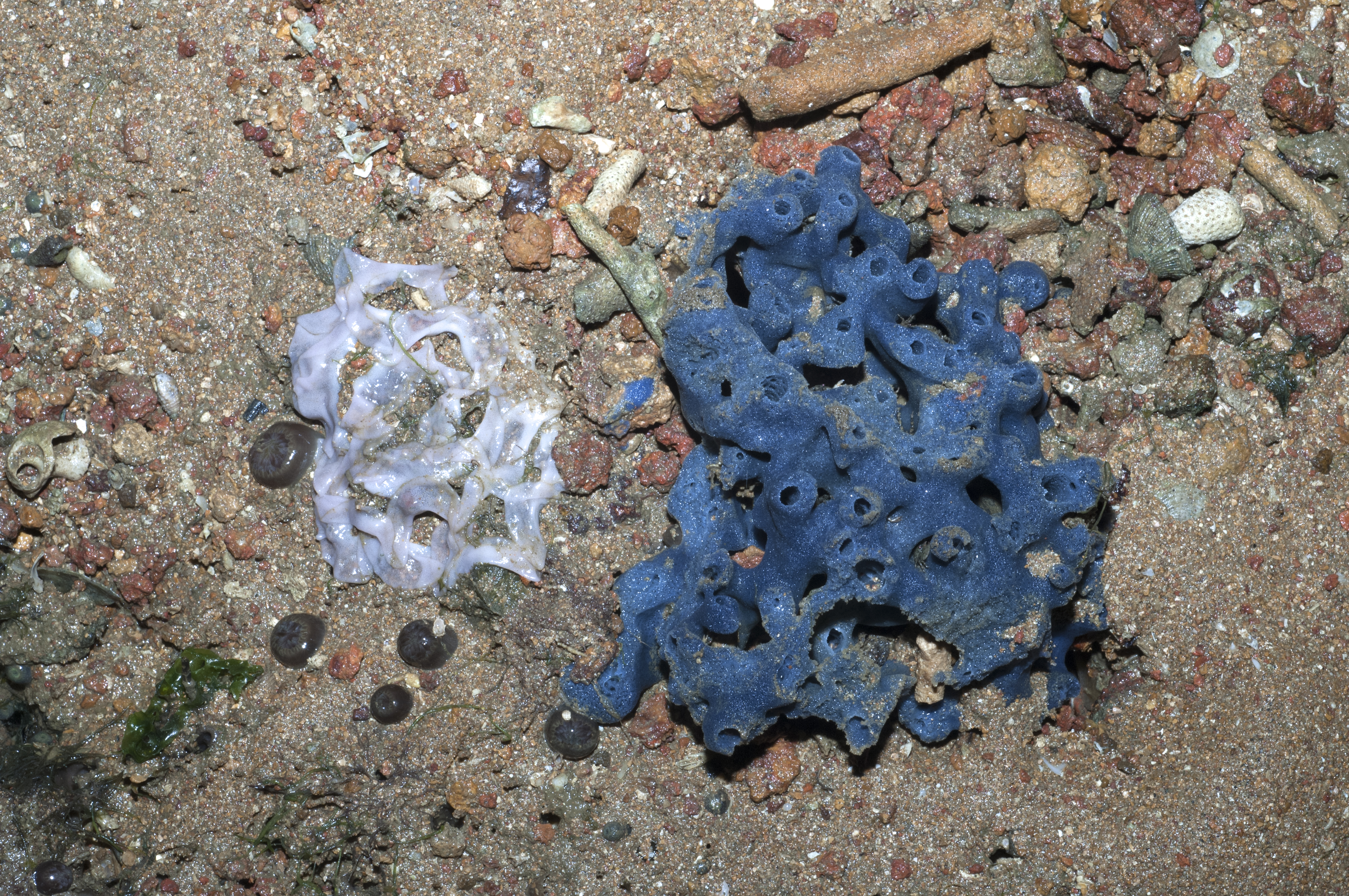
Ribbon-like eggs of Jorunna funebris. Photo taken by Ria Tan.
4.2. Diet
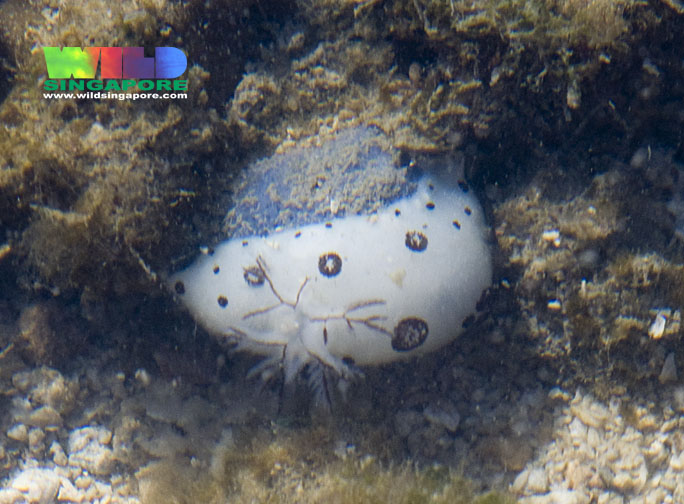
Jorunna funebris feeding on Jorunna Blue Sponge (Neopetrosia sp.). Photo by Ria Tan.
Jorunna funebris are found to feed only on sponges. Examples of sponges eaten by Jorunna funebris include Xestospongia sp., Haliclona sp., Euplacella cf. australis, and Oceanapia sp [5].
4.3. Defence
So how does a soft (and cute-looking) animal like Jorunna funebris protect itself from harm?
By throwing out undigested food remains that was accumulated and sequested into the jorumycin cyctotoxin [7]. Jorumycin is being found in the mucus, this suggests that jorumycin is used as a chemical defence for Jorunna funebris [7].
Other methods of defence include having sharp spicules (spine-like structure), to protect itself from harm [5].
5. Distribution and Range
5.1. Habitats
Jorunna funebris is commonly found in seagrass meadows, coral rubble, and coral reefs [4].
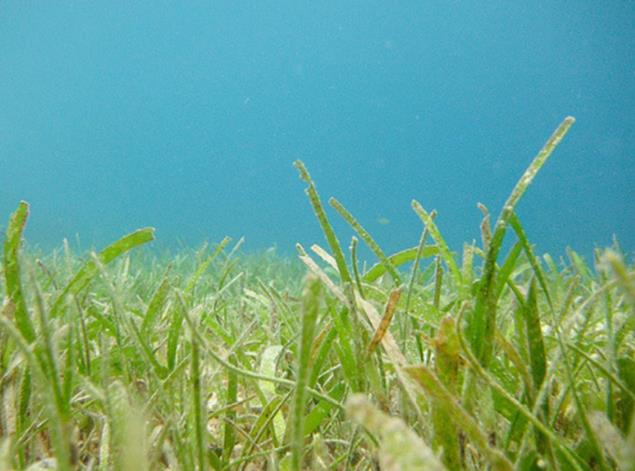 Photo taken by Rebecca Weeks (Creative Commons) |
 Photo taken by Jim Maragos (Creative Commons) |
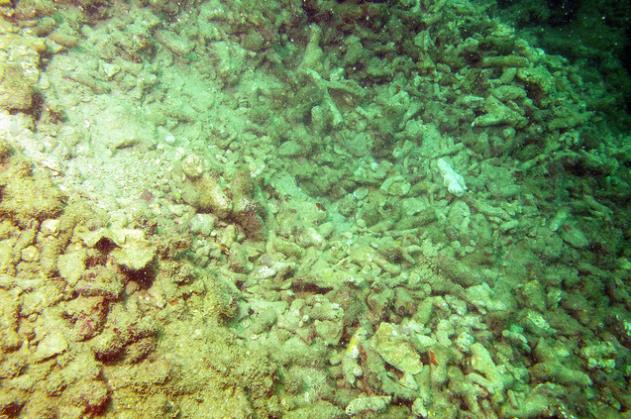 Photo taken by Jeffrey Low (Creative Commons) |
|
| Location |
Seagrass Meadows |
Coral Reefs |
Coral Rubble |
5.2. Distribution
Map adapted from the database of Lee Kong Chian Natural History Museum [4]
In Singapore, this species has been recorded at Chek Jawa, Cyrene Reef, Kusu Island, Labrador Nature Reserve, Lazarus Island, Pulau Hantu, Pulau Jong, Pulau Satumu, Pulau Seringat, Pulau Semakau, Raffles Lighthouse, Sisters Islands, St John's Island [4].
Not only so, Jorunna funebris can also be found in a widely varying geographic distribution including South Africa, India, Thailand, Vietnam, Singapore, Central China Sea, Philippines and Indonesia. The map shown below from Global Biodiversity Forum roughly points out some of the locations with recorded appearances of Jorunna funebris [5]. Do note that the records are incomplete.
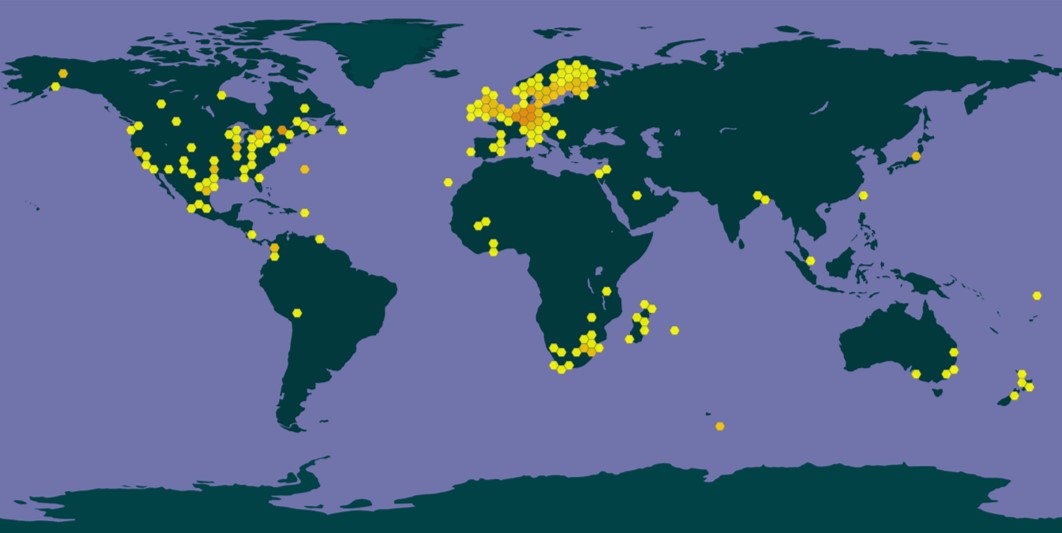
6. Status and Conservation
Jorunna funebris is not listed under IUCN Red List of Threatened Species.
Nonetheless, developments along shorelines and reclamations could easily lead to destructions of habitats for Jorunna funebris. Also, accidental trampling by curious visitors and over-collection could impact local populations [1].
7. Taxonomy and Systematics
7.1. Taxonavigation [7]:
Kingdom: Animalia
Phylum: Mollusca
Class: Gastropoda
Order: Nudibranchia
Family: Discodorididae
Genus: Jorunna
Species: Jorunna funebris
7.2. Type Specimen
A syntype, under the name of Kentrodoris annuligera Bergh 1876, is currently located in the Gastropoda collection of the Zoological Museum, University of Copenhagen. The specimen is labelled ZMUCGAS-2109, and was collected in the Philippines [3].
7.3. Original Species Description
Jorunna. funebris was first described by Kelaart in 1858 under Doris funebris [3].
Original description by Kelaart. Retrieved from Natural History Museum Library, London. (Fair Use)
7.4. Synonyms
Doris funebris Kelaart, 1859 (original combination)
Kentrodoris maculosa Eliot, 1906
Kentrodoris gigas Bergh, 1876
Kentrodoris annuligera Bergh, 1876
Discodoris wetleyi Allan, 1932
Kentrodoris funebris (Kelaart, 1859)
Doris funebris Kelaart, 1859
Jorunna zania Ev. Marcus, 1976
8. Phylogeny
Phylogeny within Jorunna
In a phylogenetic study of the genus Jorunna, took into account only morphological characters for the analysis [3]. A total of thirty-five morphological characters were used in the construction of this phylogeny. Discodoris boholiensis Bergh, 1877 and Doris verrucosa were used to root the tree [7]. Diaulula sandiegensis was also included for comparison since, it has caryophyllidia like Jorunna. These outgroup taxa were selected as they were known to be basal to the rest of the caryophyllidia-bearing dorids, and Diaulula sandiegensis forms a polytomy with Jorunna [3].
The tree obtained below, shows the proposed relationship between Jorunna funebris and other species from the genus Jorunna.
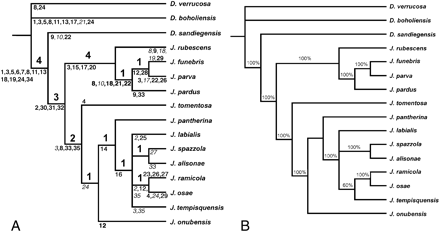
A. Preliminary phylogeny of the genus Jorunna. Strict consensus tree with Bremer support analysis. Large numbers on the branches show the Bremer support values, small numbers show the character evolution (see text). Italic numbers indicate reversals. B. 50% Majority rule tree of five most parsimonious trees. From Camacho-Garcia and Gosliner (Fair Use) [3].
Camacho-Garcia and Gosliner's phylogenetic analysis shows that the genus Jorunna is a monophyletic group supported by four morphology characters – prolongation of the posterior foot, stomach free, accessory gland and copulatory spine. Diaulula sandiegensis was also found to be the sister group to Jorunna [3].
9. References
[1]: Wild Fact Sheets. (n.d.) Nudibranch. Retrieved from http://www.wildsingapore.com/wildfacts/mollusca/nudibranchia.htm (Accessed on 6th November 2017).
[2]: Wild Fact Sheets. (n.d.) Slugs: nudibranch, sea hare or sap-sucking slug? Retrieved from http://www.wildsingapore.com/wildfacts/mollusca/nudiharesac.htm (Accessed on 6th November 2017).
[3]: Camacho-García, Y. E., & Gosliner, T. M. (2008). Systematic revision of Jorunna Bergh, 1876 (Nudibranchia: Discodorididae) with a morphological phylogenetic analysis. Journal of Molluscan Studies, 74(2), 143-181.
[4]: The DNA of Singapore. (n.d.) Jorunna funebris. Retrieved from http://lkcnhm.nus.edu.sg/dna/organisms/details/105 (Accessed on
6th November 2017).
[5]: Great Barrier Reef Invertebrates. (n.d). Jorunna funebris. Retrieved from http://www.gbri.org.au/Species/Jorunnafunebris.aspx?moid=554&PageContentID=1665 (Accessed on 6th November 2017).
[6]: Wild Fact Sheets (n.d.). Polka-dot Nudibranch. Retrieved from http://www.wildsingapore.com/wildfacts/mollusca/slugs/nudibranchia/funebris.htm (Accessed on 6th November 2017).
[7]: Encyclopaedia of Life. (n.d.). Jorunna funebris, Midas cichlid. Retrieved from http://eol.org/pages/4884933/overview (Accessed on 6th November 2017).
